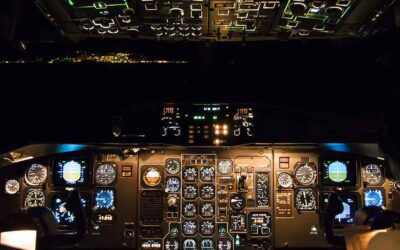Exploring the Cutting-Edge Technologies that are Propelling the Aerospace Industry into the Future
The aerospace industry has historically been a vanguard of engineering innovation. As we set our sights further into the skies and beyond, new technologies are essential to address the challenges and opportunities that await. This article will take you through five groundbreaking innovations in aerospace engineering fueling the next air travel and space exploration era.
- Electric and Hybrid-Electric Propulsion
As environmental concerns gain prominence, the aerospace industry is searching for greener alternatives to conventional jet fuel. Electric and hybrid-electric propulsion systems stand at the forefront of this pursuit. By using electric motors and batteries, these systems aim to reduce emissions drastically. Moreover, they can lead to quieter aircraft, addressing noise pollution around airports. Companies like Airbus, Boeing, and smaller startups actively research and develop aircraft with electric or hybrid-electric propulsion systems. Though challenges like battery weight and energy density remain, this innovation signifies a step towards sustainable air travel.
- Reusable Launch Systems
The cost of launching payloads into space has been a significant barrier to space exploration. Reusable launch systems are revolutionizing this aspect. Spearheaded by companies like SpaceX with its Falcon 9 rocket, this innovation involves launching spacecraft that can return to Earth, be refurbished, and be launched again. By reusing rockets, the cost per launch decreases dramatically, making space more accessible for various applications and industries.
- Additive Manufacturing for Aerospace Components
Additive manufacturing, or 3D printing, is finding novel applications in aerospace engineering. The ability to create complex geometries lends itself to producing lighter and stronger components. From engine parts to entire satellite structures, additive manufacturing enables a new level of design optimization. Furthermore, it can reduce production times and costs and allow for more manufacturing process customization.
- Autonomous Unmanned Aerial Vehicles (UAVs)
With advancements in robotics and artificial intelligence, autonomous UAVs are seeing remarkable developments. Beyond military applications, UAVs are employed for many civil applications, including cargo transport, surveying and mapping, search and rescue operations, and more. The drones can access remote or dangerous areas, providing critical data or services without risking human lives. As the technology matures, we can expect to see even more applications emerge.
- Hypersonic Travel
The quest for faster travel is relentless. Hypersonic travel involves flying at speeds greater than Mach 5, or five times the speed of sound. This innovation could revolutionize air travel, reducing flight times significantly. For instance, a hypersonic flight could travel from New York to London in less than two hours. While this technology is still nascent, companies like Boeing and Lockheed Martin, and various governmental agencies are investing heavily in the research and development of hypersonic technologies.
The Sky is Not the Limit
These five innovations are just a glimpse into the future of aerospace engineering. From greener propulsion systems and cost-effective space exploration to rapid prototyping, autonomous flights, and hypersonic travel, the sky is not the limit for what can be achieved in aerospace innovation. As engineers continue to push the boundaries, these technologies promise to transform the aerospace industry and how we perceive travel and exploration. The next frontier awaits, and aerospace engineering is at the helm, steering us toward uncharted territories.




